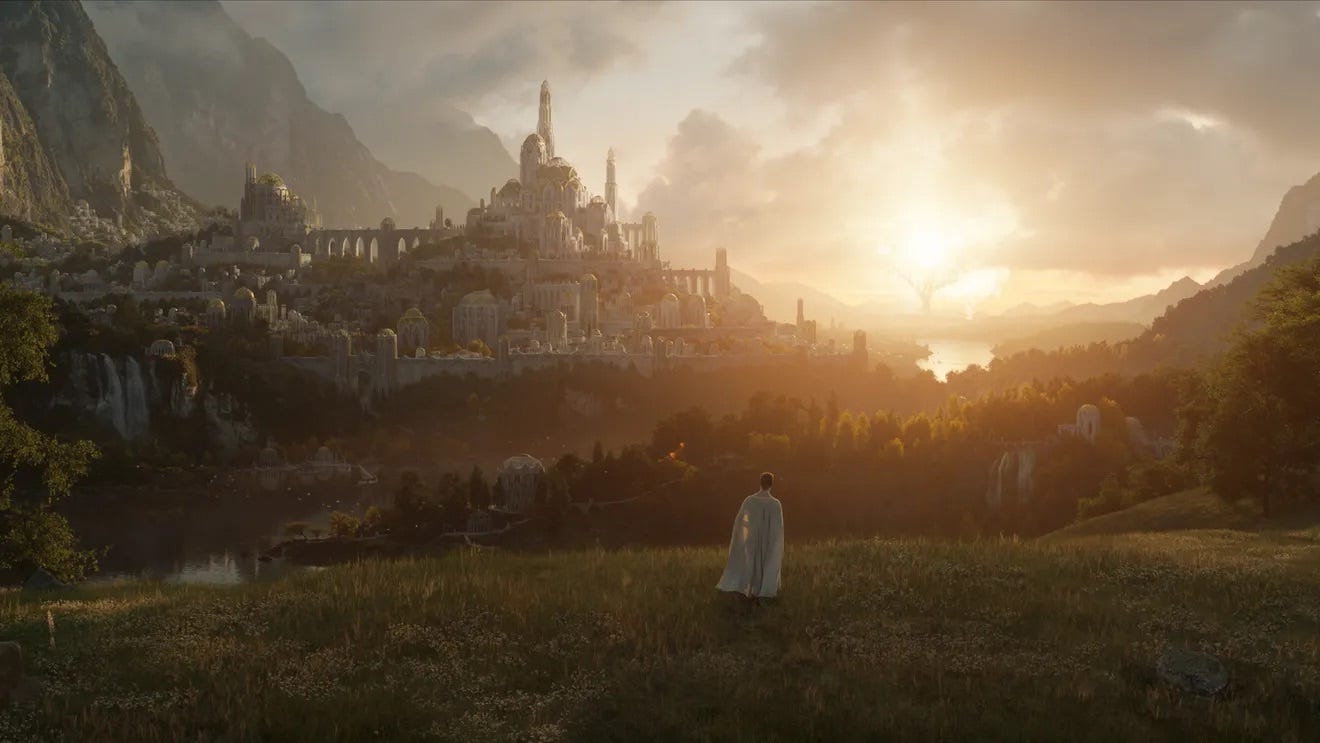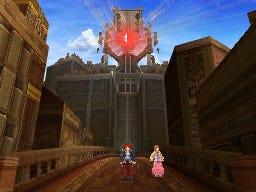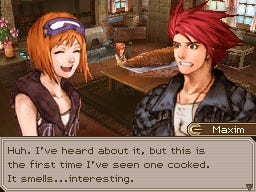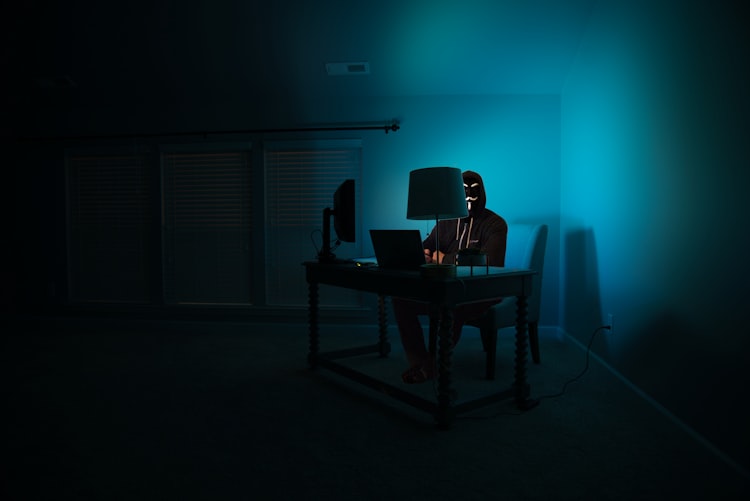Astrolabe 25: Why I'm not gonna write about The Rings of Power
Fight, Magic, Items: The History of Final Fantasy, Dragon Quest, and the Rise of Japanese RPGs in the West is out in less than a month! Preorders are a huge boon for writers, so, if you're interested, check out the book's website for all your preordering options!
In the meantime, physical copies are arriving, and... just look at this! It's a real book. That I wrote and you can read in just a few weeks!

Why I'm not gonna write about The Rings of Power
"But, Aidan. You love Lord of the Rings!"
I do! But, I'm not gonna cover The Rings of Power.
Why?
Because sometimes it's nice just to be a fan of a thing you love.
Out & About
(Out & About is where I highlight my work around the web—some recent and some old favourites.)
9 Games You Can Beat in an Afternoon (and 3 You Can Tackle in a Weekend) — lifehacker.com Because gaming is great, but your time is valuable.
I've been known to get lost in a 100+ hour game like Elden Ring or Horizon: Zero Dawn from time-to-time, but I'm also a huge sucker for short and polished experiences that don't outstay their welcome. Over on Lifehacker, I've gathered a dozen of my favourite short games that are perfect for an evening or weekend binge fest.
LTTP—Lufia: Curse of the Sinistrals (Nintendo DS, 2010)
( LTTP stands for “Late to the Party” and is a regular column where I let Twitter decide which retro game I’ll play for an hour. Do your worst, Twitter!)
For this edition of LTTP, we're dipping our toes into an unusual remake of a Super NES classic: Lufia: Curse of the Sinistrals. Coincidentally, as I'm writing this column, I just received notice that the copy of Lufia II: Rise of the Sinistrals that I splurged on to celebrate the upcoming release of Fight, Magic, Items was mailed off to me and should arrive by early next week. Clandestine.

Though I came to it late—my first playthrough only five or six years ago via emulator—Lufia II: Rise of the Sinistrals is one of my absolute favourite JRPGs and Super NES games. It's plagued by an abysmal localization, sure, but at the time games like Chrono Trigger and Phantasy Star IV, with reasonable localizations, were the exception, not the norm. Other than that, it's got gorgeous, bright graphics and art, a bumpin' soundtrack from Yasunori Shiono, a snappy turn-based combat system, and clever puzzle-based dungeons, all packaged up in a satisfying sub-25 hour playtime. It's great. But, as it was released near the end of the Super NES's run, it didn't reach as many players as it should've, and became difficult to play because it was never rereleased.
So, naturally, it made sense a few years later to remake it as a 3D action RPG on the Nintendo DS with a level-based structure, steampunk redesign, and a significantly rewritten story, right?
It sounds crazy, and it is, but...
It also kinda works?

The first thing that stood out to me was that the redesigned world shines with personality and diverse environmental design. If there's a major knock against the original, it's that all the towns, dungeons, and caves look the same. But here you've got quaint pastoral villages, cities crisscrossed with canals and littered with unique landmarks, and dungeons that range from labyrinthine mines to the mechanical guts of a huge drawbridge. And that's only in the first three hours. Despite the low resolution and limited texture abilities of the DS, Curse manages to one-up the original in creative world design. Similarly, the characters got a major visual overhaul to give them a modern steampunk aesthetic—your mileage may vary, but it worked for me and helped give the game more of an identity.

Navigating 3D environments with the DS's analog gamepad is never a great experience, and Curse is no exception there. The combat doesn't feel great, and the enemies have a bit too much health, but there's some fun to be had in the ability to switch between characters on the fly, utilizing their special abilities and unique attack patterns based on your preference or the type of enemy you're fighting. It feels like it owes more than a bit to the Ys series.
While the combat may have been completely revamped, the switch to 3D dungeons didn't come at the expense of the original's trademark puzzle solving. Each of the dungeons is full of puzzles, and the player will spend just as much time utilizing their brain as their muscles. It's still a DS game, so the small viewport, clunky controls, and general lack of direction can make some of the puzzle solving more tiresome than necessary, but it wouldn't feel like Lufia without it. A fair compromise, I think.
Curse of the Sinistrals is a strange remake. It changes nearly everything, just barely hangs onto the spirit of the original, and yet, in a vacuum, presents as a perfectly fun 3D action RPG. Is it the remake fans of the original wanted? Not even close. Did it help make the original more accessible—like the remakes of the Final Fantasy games on GBA and DS? Nope. Set all that aside, though, and the game's infectious earnestness is sure to win you over.
Lufia: Curse of the Sinistrals was released in 2010 for the Nintendo DS. It has not been rereleased or made available on modern consoles.
Recommended Reads

Tomorrow, and Tomorrow, and Tomorrow by Gabrielle Zevin
It's honestly hard to think of a book more in my wheelhouse than this tragic and funny coming-of-age romantic comedy by Gabrielle Zevin. Following Sam and Sadie through their lives from childhood to adulthood, this is a story about love and friendship, heartbreak, video games, and learning to be kind to yourself. When Sam and Sadie first meet in the common area of a children's hospital, they begin a journey of creation and collaboration centred around their mutual love for each other and video games.
Video game culture in fiction is hit-or-miss for me. Often I find it devolves into thoughtless window dressing to give the book a geeky flair. But it's so deftly woven into every part of Tomorrow, and Tomorrow, and Tomorrow—from plot to conflict, character to theme—that it works effortlessly and adds tremendously to the book. It's obvious Zevin not only has a love and long relationship with games, but understands the complexity of their culture and industry. Tomorrow, and Tomorrow, and Tomorrow is a beautiful, entertaining, and sometimes harrowing look at game development, but above that, it's the heartache of love and self-loathing, and how sometimes we need to look to others to see the best in ourselves.
Buy Tomorrow, and Tomorrow, and Tomorrow by Gabrielle Zevin
Quest Markers
(Quest Markers is a collection of the coolest stuff I’ve read around the web lately.)
- The Collectors Who Save Video-Game History from Oblivion (New York Times)
- Tolkien and the Horrors of the Great War (Transfer Orbit)
- Queerness is not a checkbox in Guild Wars 2 (Gayming)
- The biggest competition for PlayStation Plus isn’t Xbox Game Pass (Launcher)
- Visiting Canada’s $50 million 1980s ghost town (Justin McElroy)
- Why Does a Librarian Own a Social Media Site That’s Been Around for Longer Than Facebook? (Initiative for Digital Public Infrastructure)
- 10 Japan-Only Super Famicom RPGs for Fans of Live A Live (Fanbyte)
- Jordan Peele Exists in a Space of His Own (The Ringer)
- On the 13 Words That Made Me a Writer (Literary Hub)
- Super Mario Brothers Karamazov: literature begins to take gaming seriously (The Guardian)
- 35 years ago, Hideo Kojima changed action games forever (Inverse)
- Imagining different histories: P. Djèlí Clark on history, fantasy, and how racism creates monsters (Transfer Orbit)
- Museums acquire viral Goose game so future generations can have a gander (The Age)
- My Mental Health Is Like Playing a Metroidvania Game—I Take It One Step at a Time (Catapult)
- Princess Mononoke: The masterpiece that flummoxed the US (BBC)
End Step
The Hugo Awards were awarded last weekend! In addition to my excitement for the wonderful winners and finalists, I was also touched to see enough of you nominated Astrolabe that it landed on the longlist for "Best Fanzine." Thank you! Maybe one day we'll make the shortlist.
Y'all are too good to me.
— Aidan Moher (@adribbleofink) 5:31 AM ∙ Sep 5, 2022
Support
There are lots of ways to support Astrolabe and my other work. Check ‘em out!
Keep In Touch
Enjoy Astrolabe? Want more SFF and retro gaming goodies? You can find me on Twitter and my website.
Credits
Astrolabe banner photo by Shot by Cerqueira on Unsplash






Member discussion